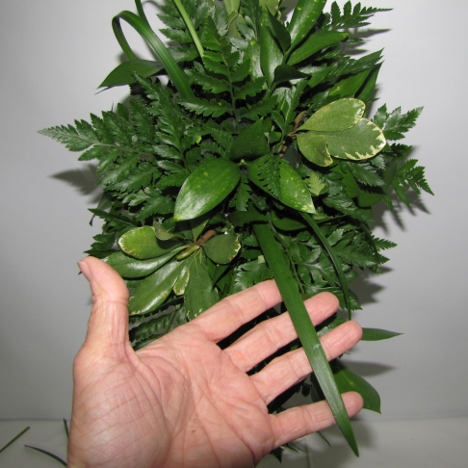rose bouquet greens
This rose bouquet with interesting greens can add just as much drama as the flowers do. If you wish to make a monochromatic bouquet (all one color), it
is important to add more unique textures, incorporating into the design. Variegated pittosporum is a favorite with florists. It comes in both
variegated (mixing whitish shades on the leaves) to a solid green. It
has beautiful leaves that are well suited for matching corsage and
boutonniere work and can easily be cut into lengths for bouquet
designs.
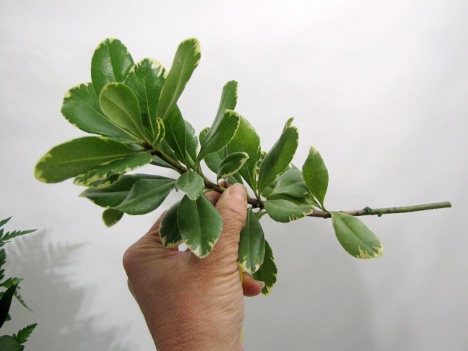
Cut between the leaves, choosing a point on the stem where no laterals are coming off. Cut an angle so the bottom inserts easily into the wet foam.
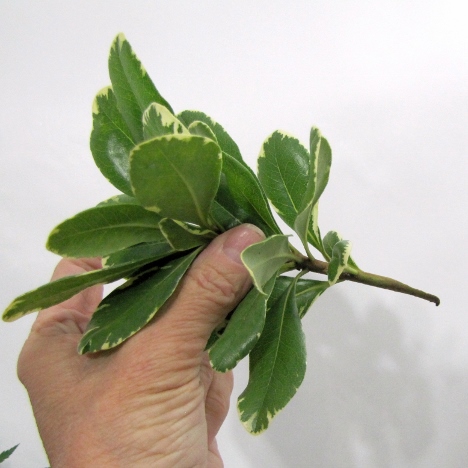
The glossy leaves cluster in a 4 to 6 leaf circle around the stem.
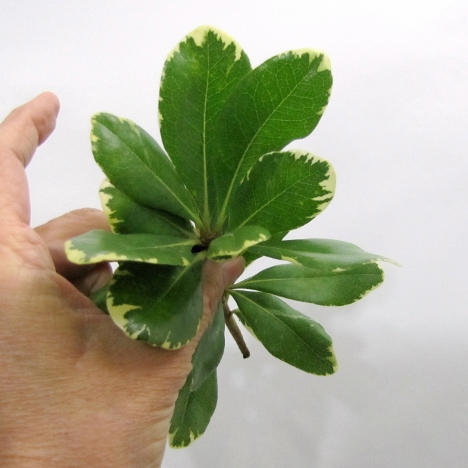
Tuck it down deep into the foam so that it pushes the leaves upward and helps conceal the cut edge of the stem.
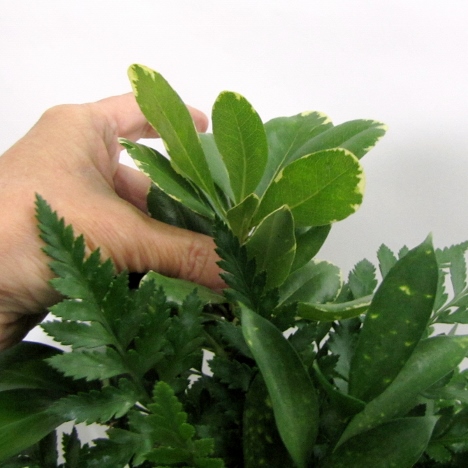
These leaf clusters are bigger than the ruscus, so don't overdo. Just tuck a few pieces in here or there at random.
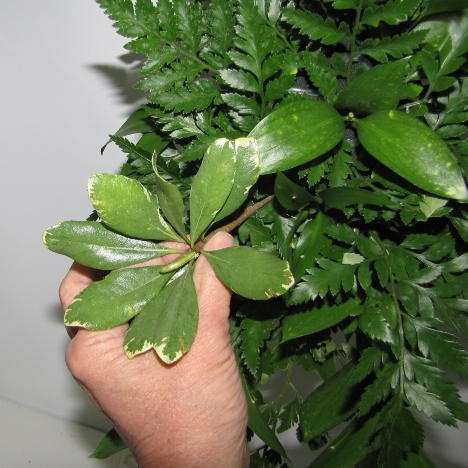
See how the different shaped green and a little variety in color adds more interest.
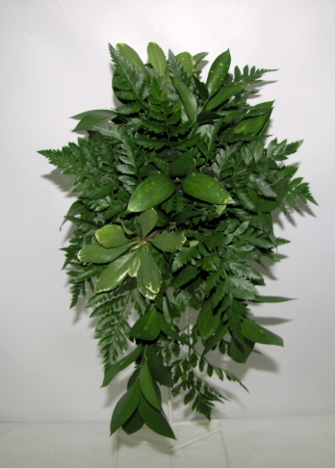
Tuck a few clusters in the side.
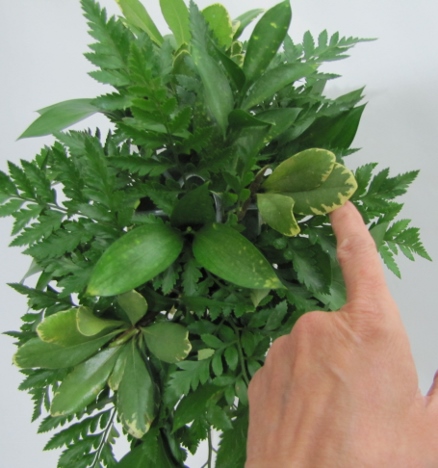
By now the cascade is well defined and the greening is almost done. Wait, though . . . we're going to add one more interesting foliage
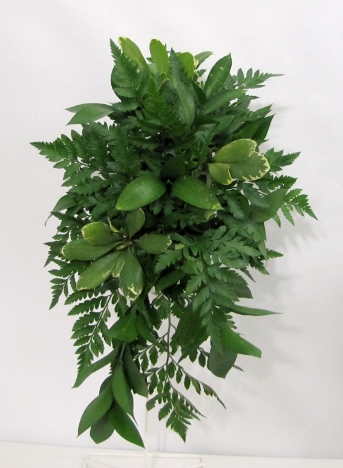
Lily grass is an absolute favorite of mine. I love adding this long accent in everything from bridal bouquets to corsages and boutonnieres.
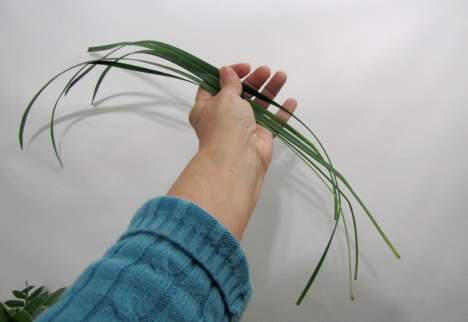
Lily grass is a little sturdier than bear grass and can be inserted easily into the florist foam.
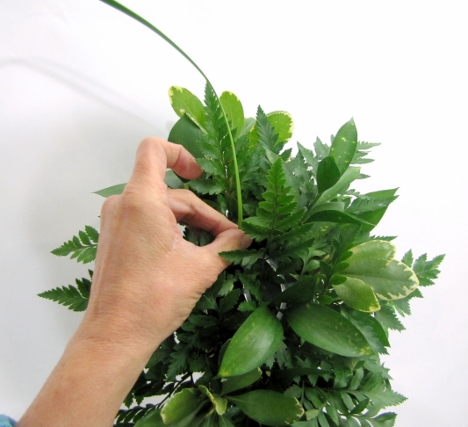
I've tucked both ends into the foam, creating a loop of grass that encircles the other greenery.
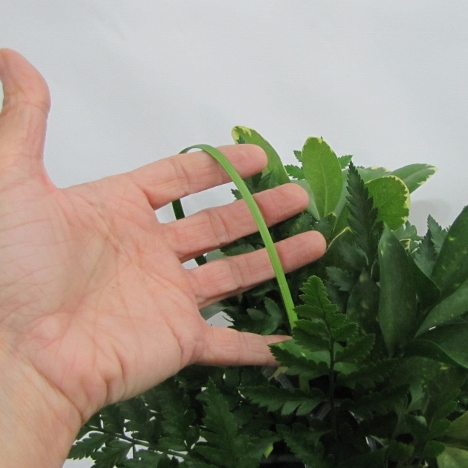
Cutting the grass ends to a sharp angle helps insertion go easier.
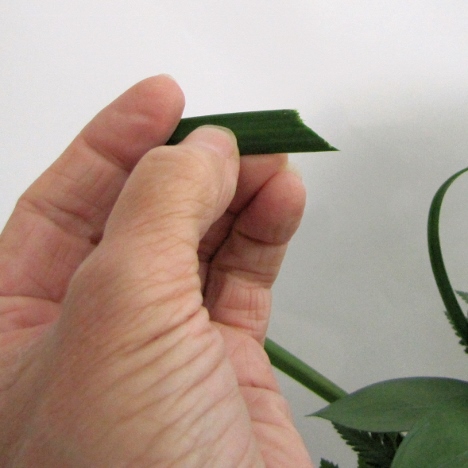
Insert the stem deep enough that there isn't chance of it popping loose. See how the grass inserts into the Oasis foam.
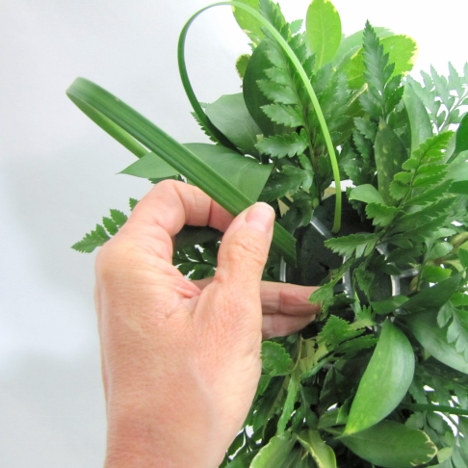
At an angle down the opposite lower right of the bouquet, I put two straight lengths of the grass coming out.
